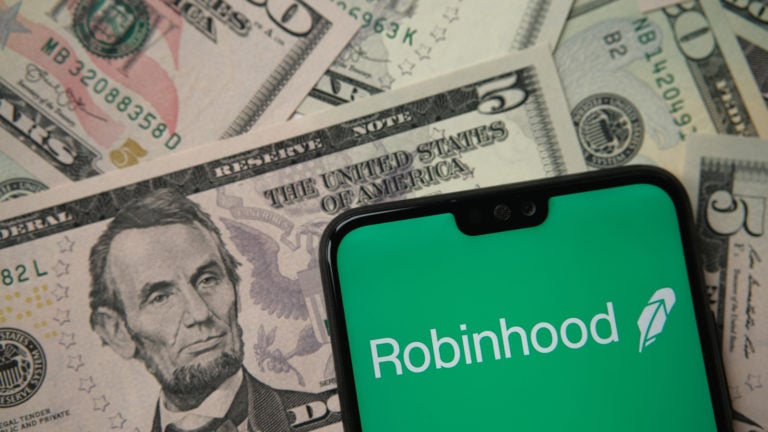Robinhood (NASDAQ:HOOD) is a seamless choice for those interested in stock trading, ETFs, and cryptocurrency, unified within a single platform.
Renowned as a leading online broker, it provides a user-friendly mobile app and fee-free service. This investment platform simplifies commission-free trading of stocks, ETFs, crypto, and options via a mobile app or website.
It’s appealing to beginners because of its straightforward, user-friendly design.
However, Robinhood’s service gleans the most appeal from experienced investors. It allows traders to customize their portfolio via a wide range of features, such as options trading and margin accounts. That said, it might look appealing for short-term traders. But will it be the same in the long-run?
Recent HOOD Updates
Amid a favorable equities landscape, HOOD stock has declined after a substantial following its recent earnings report. Alphabet (NASDAQ:GOOG) also disclosed it is reducing its stake in HOOD stock, cutting it by almost 90%.
The trading app company faced challenges because of a slowdown in its primary business. Alphabet had initially invested in Robinhood when it was a private startup, holding over 4.9 million HOOD shares by the close of 2021.
Amid the height of the Robinhood excitement in August 2021, the value of Alphabet’s stake reached nearly $419 million shortly after its IPO. After the mentioned sale, Alphabet now holds only 612,214 HOOD shares, valued around $7 million, according to Reuters.
The Bearish View
The pandemic benefitted Robinhood, attracting millions of new investors. However, as the pandemic’s influence waned, so did Robinhood’s fortunes.
HOOD stock is currently trading around $10.25 at the time of writing, rising 57% year-to-date but still far from its $70 peak. It’s categorized as a high-risk tech stock. Trading and active users have notably declined on the platform, causing slowed revenue growth and consistent losses.
Robinhood’s survival in the competitive market requires substantial efforts, as it lacks distinctive products or services. A $511 million net loss in the recent quarter resulted from increased operating expenses.
Notably, its success during the pandemic hasn’t translated into ongoing growth. Moreover, ending its support for the crypto sector because of lawsuits has prompted investors to migrate to alternative platforms.
While losses may lessen, substantial growth in upcoming quarters is unlikely. Robinhood remains unprofitable, carrying more risks than growth potential.
Trading near its 52-week high, current holders should consider divesting. The imminent release of Q2 results might extend stock decline due to another quarter of losses. It’s advisable to steer clear of this tech stock.
What Now
What concerns external observers most about HOOD stock is that even positive developments haven’t sparked a bullish outlook. Recently, Robinhood reported its inaugural profitable quarter, a feat CEO Vlad Tenev termed a “significant milestone.” Encouragingly, this performance exceeded analysts’ forecasts for a minor loss.
That said, HOOD stock continues to see strong downward pressure due to the persistent negative environment. Currently, cryptocurrency trading remains a minor aspect of this stock’s overall picture.
Robinhood’s stock price, hovering around $10, reflects a standstill and a decline of about 75% from its IPO price in July 2021.
Continuous losses and heightened competition contribute to this situation, making Robinhood potentially too speculative for risk-averse investors.
On the date of publication, Chris MacDonald did not have (either directly or indirectly) any positions in the securities mentioned in this article. The opinions expressed in this article are those of the writer, subject to the InvestorPlace.com Publishing Guidelines.

